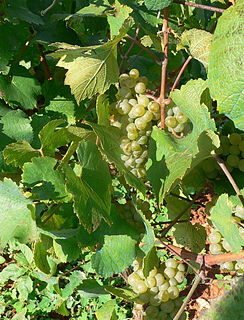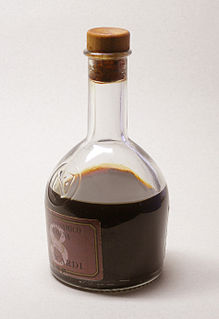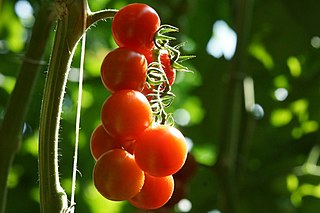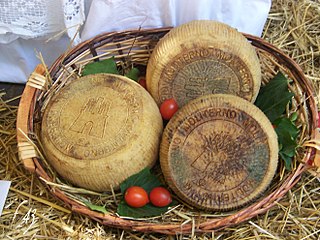| Grapes of Apulia | |
|---|---|
 | |
| Species | Vitis vinifera |
| Cultivar group | Grapes cultivars |
| Origin | Southern Mediterranean |
| Cultivar group members |
|
Uva di Puglia PGI is a variety of grape grown in the southern Italian region of Apulia (Puglia).
| Grapes of Apulia | |
|---|---|
 | |
| Species | Vitis vinifera |
| Cultivar group | Grapes cultivars |
| Origin | Southern Mediterranean |
| Cultivar group members |
|
Uva di Puglia PGI is a variety of grape grown in the southern Italian region of Apulia (Puglia).
Since it was part of the Magna Graecia, Apulia has ever been characterised by an important production of wine and table grape. Regarding the varieties included in Uva di Puglia PGI (Grapes of Apulia), the first evidence dates back to the end of the 19th century when Sergio Musci from Bisceglie started to successfully export it to the biggest cities of Northern Italy like Bologna, Milan and Turin. This type of grapes showed a great preservation of the organoleptic characteristics getting possible to export it to international markets without any problem. Therefore, at the beginning of the 20th century, Cav. Francesco De Villagomez from Bisceglie did the first exportation in Germany. In 1975, the export of Uva di Puglia amounted to 62,4% of the entire Italian table grape production destined for the foreign market. In 1985 it reached 74,1%. [1]
The varieties included in Uva di Puglia PGI are several. Among the white grapes, there are the varieties: Italia, Regina and Victoria, straw yellow-coloured. They have seeds, the pulp is crunchy and, above all the variety Italia has a Moscato flavour. The red variety is the Michele Palieri characterised by a dark colour and a less sweet taste while the pink one, the Red Globe is very sweet and it is perfect for making desserts and jam. [2] The harvesting period starts during the second decade of July for the Victoria and the Michele Palieri and between the third decade of July and August for the other varieties. This product is rich in sugar as glucose and mannose and in mineral salts like potassium, iron and phosphorus. It is also rich in B vitamins and in C and K vitamin.
The area of production includes almost all the municipalities of Apulia under 330 m. below sea level (1082 ft.). Therefore, the villages of the area of the Subappennino Dauno are excluded. These lands are rich in calcium and potassium and are characterised by the mild climate also in winter.
Consorzio di Tutela Uva di Puglia IGP, Bari

Apulia is a region of Italy, located in the southern peninsular section of the country, bordering the Adriatic Sea to the east, the Ionian Sea to the southeast, and the Strait of Otranto and Gulf of Taranto to the south. The region comprises 19,345 square kilometers (7,469 sq mi), and its population is about four million.

Malvasia is a group of wine grape varieties grown historically in the Mediterranean region, Balearic Islands, Canary Islands and the island of Madeira, but now grown in many of the winemaking regions of the world. In the past, the names Malvasia, Malvazia, and Malmsey have been used interchangeably for Malvasia-based wines; however, in modern oenology, "Malmsey" is now used almost exclusively for a sweet variety of Madeira wine made from the Malvasia grape. Grape varieties in this family include Malvasia bianca, Malvasia di Schierano, Malvasia negra, Malvasia nera, Malvasia nera di Brindisi, Malvasia di Candia aromatica, Malvasia odorosissima, and a number of other varieties.

Sangiovese is a red Italian wine grape variety that derives its name from the Latin sanguis Jovis, "the blood of Jupiter". Though it is the grape of most of central Italy from Romagna down to Lazio, Campania and Sicily, outside Italy it is most famous as the only component of Brunello di Montalcino and Rosso di Montalcino and the main component of the blends Chianti, Carmignano, Vino Nobile di Montepulciano and Morellino di Scansano, although it can also be used to make varietal wines such as Sangiovese di Romagna and the modern "Super Tuscan" wines like Tignanello.

Balsamic vinegar is a very dark, concentrated, and intensely flavoured vinegar originating in Italy, made wholly or partially from grape must. Grape must is freshly crushed grape juice with all the skins, seeds and stems.

Aglianico is a black grape grown in the southern regions of Italy, mostly Basilicata and Campania. It is considered with Sangiovese and Nebbiolo to be one of the three greatest Italian varieties. Aglianico is sometimes called "The Barolo of the South" due to its ability to produce highly refined, complex fine wines like the famous Piedmont wine, Barolo.

Burrata is an Italian cow milk cheese made from mozzarella and cream. The outer casing is solid cheese, while the inside contains stracciatella and cream, giving it an unusual, soft texture. It is typical of Apulia.

The Province of Bari was a province in the Apulia region of Italy. Its capital was the city of Bari.
Negroamaro is a red wine grape variety native to southern Italy. It is grown almost exclusively in Apulia and particularly in Salento, the peninsula which can be visualised as the "heel" of Italy. The grape can produce wines very deep in color. Wines made from Negroamaro tend to be very rustic in character, combining perfume with an earthy bitterness. The grape produces some of the best red wines of Apulia, particularly when blended with the highly scented Malvasia Nera, as in the case of Salice Salentino.

Italian wine is produced in every region of Italy, home to some of the oldest wine-producing regions in the world. Italy is the world's largest producer of wine, with an area of 702,000 hectares under vineyard cultivation, and contributing a 2013–2017 annual average of 48.3 million hl of wine. In 2018 Italy accounted for 19 percent of global production, ahead of France and Spain. Italian wine is both exported around the world and popular domestically among Italians, who consume an average of 42 litres per capita, ranking fifth in world wine consumption.

Manduria is a city and comune of Apulia, Italy, in the province of Taranto. With c. 32,000 inhabitants (2013), it is located 35 kilometres (22 mi) east of Taranto.

Gravina in Puglia is a town and comune of the Metropolitan City of Bari, Apulia, southern Italy.
Susumaniello is a variety of red wine grape from the 'heel' of Italy. It is an ancient grape variety which is grown in the province of Brindisi in the southern Italian region of Apulia.
Verdeca is a white Italian wine grape variety that is primarily grown in the Colli Piacentini region of Emilia-Romagna in central Italy and Apulia in southern Italy where ampelographers believe that the grape may have originated. In Apulia, it is one of the main grapes in the Denominazione di origine controllata wines of Locorotondo DOC and Martina Franca DOC along with Bianco d'Alessano. In Campania, it is grown on the slopes of Mount Vesuvius where it used as a blending variety with Falanghina, Coda di volpe and Greco in both the white wines and the sweet dessert wine of the region, Lacryma Christi. It is also a minor component used in the some vermouth production.
Bombino bianco is a white Italian wine grape variety planted primarily along Italy's Adriatic coast line, most notably in Apulia. The vine is prone to high yields and often produces neutral flavor wines. The grape is known under many synonyms throughout Italy including Debit and Pagadebit, names which came from the grape's reputation for being a high yielding and reliable crop for vineyard owners to grow that would assure them that on each vintage they could pay off their debts.

The Pomodoro di Pachino is an IGP/PGI for tomatoes from the southeast coast of Sicily, Italy, which has been granted IGP protection by the EU since 2003.

Canestrato is a hard cheese from the Italian regions of Basilicata, Apulia, Sicily, and Abruzzo, made from a mixture of sheep milk and goat milk. It is listed on the Ark of Taste. The cheese is typical in Basilicata. It is also a specialty of Castel del Monte, Abruzzo. The Apulian variety is made using Lactobacillus brevis.

The Siracusa lemon is the fruit of the cultivar "femminello" and its clones, corresponding to the botanical species Citrus x limon L. Burm. The femminello cultivar from Siracusa is the most common variety of lemon in Italy, and produces three main flowerings: the primofiore, the bianchetto and the verdello. The Disciplinary regulations of the Siracusa Lemon (PGI) forbids the use of waxes and/or fungicides in post-harvesting, and therefore the fruit is edible in all its parts.

The Metropolitan City of Bari is a metropolitan city in the Apulia region of Italy. Its capital is the city of Bari. It replaced the Province of Bari and includes the city of Bari and some forty other municipalities (comuni). It was first created by the reform of local authorities and then established by the Law 56/2014. It has been operative since January 1, 2015.
Balsamic vinegar of Modena is a variety of balsamic vinegar and a PGI condiment from Italy. It is produced according to various recipes. The PGI production regulations leaves plenty of leeway, allowing the use of grape must in percentages between 20 and 90% and wine vinegar between 10 and 80%. The use of caramel is allowed, up to 2%. Reading the tag can provide useful information on the ingredients used and the processing methods. Withdrawal and refilling, as used in making Traditional Balsamic Vinegar, are not used; the ingredients, once mixed, must be kept in wood containers for a duration of at least 60 days. If the product is kept there for 3 years or more it is labeled "invecchiato" (aged). The Balsamic vinegar of Modena gained the PGI label on 3 July 2009. The requirements for the much more expensive PDO Traditional Balsamic Vinegar are different and more restrictive; it must contain only grape must and be aged for at least 12 years. But the story of Balsamic Vinegar starts much earlier in 1100 in the little city of Modena, when Henry III, Emperor of the Holy Roman Empire, was given a “very perfect vinegar” by Bonifacio, Marquis of Tuscany.
Apulian cuisine consists of the cooking traditions and practices of the region of Apulia in Italy. Starting from the Middle Ages the permanent residence of the nobility in the region gradually declined, which caused the disappearance of their noble cuisine over time. As the common people suffered from poverty, their culinary tradition adapted to use cheap and simple foods. Bread, vegetables and pasta have the leading role in the cuisine. Fruits, fish and wine are consumed frequently as well, but meat plays a minor role. The food of Apulia is known as a prime example of cucina povera or 'cuisine of the poor', but this characterizes its simplicity rather than its quality. More so, the simple dishes allow the quality of their local and seasonal ingredients to take center stage.